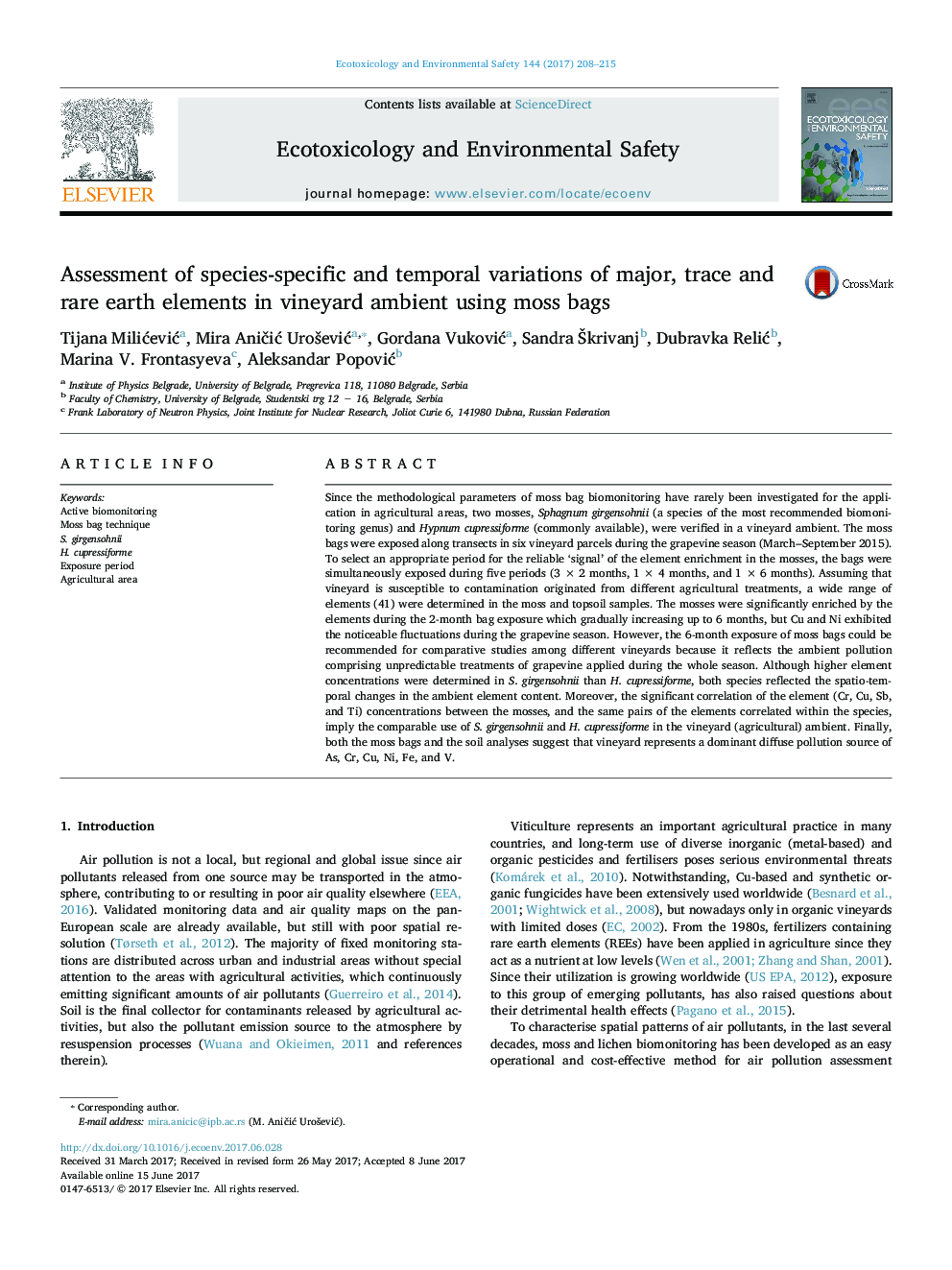| کد مقاله | کد نشریه | سال انتشار | مقاله انگلیسی | نسخه تمام متن |
|---|---|---|---|---|
| 5747505 | 1618920 | 2017 | 8 صفحه PDF | دانلود رایگان |
- The moss element concentrations increased during 2â4â6-month exposure in vineyard.
- The concentrations of Cu and Ni markedly fluctuated during the grapevine season.
- Six-month of the moss exposure is suggested for comparative studies among vineyards.
- S. girgensohnii and H. cupressiforme are comparable for the biomonitoring in vineyards.
Since the methodological parameters of moss bag biomonitoring have rarely been investigated for the application in agricultural areas, two mosses, Sphagnum girgensohnii (a species of the most recommended biomonitoring genus) and Hypnum cupressiforme (commonly available), were verified in a vineyard ambient. The moss bags were exposed along transects in six vineyard parcels during the grapevine season (MarchâSeptember 2015). To select an appropriate period for the reliable 'signal' of the element enrichment in the mosses, the bags were simultaneously exposed during five periods (3 Ã 2 months, 1 Ã 4 months, and 1 Ã 6 months). Assuming that vineyard is susceptible to contamination originated from different agricultural treatments, a wide range of elements (41) were determined in the moss and topsoil samples. The mosses were significantly enriched by the elements during the 2-month bag exposure which gradually increasing up to 6 months, but Cu and Ni exhibited the noticeable fluctuations during the grapevine season. However, the 6-month exposure of moss bags could be recommended for comparative studies among different vineyards because it reflects the ambient pollution comprising unpredictable treatments of grapevine applied during the whole season. Although higher element concentrations were determined in S. girgensohnii than H. cupressiforme, both species reflected the spatio-temporal changes in the ambient element content. Moreover, the significant correlation of the element (Cr, Cu, Sb, and Ti) concentrations between the mosses, and the same pairs of the elements correlated within the species, imply the comparable use of S. girgensohnii and H. cupressiforme in the vineyard (agricultural) ambient. Finally, both the moss bags and the soil analyses suggest that vineyard represents a dominant diffuse pollution source of As, Cr, Cu, Ni, Fe, and V.
316
Journal: Ecotoxicology and Environmental Safety - Volume 144, October 2017, Pages 208-215
